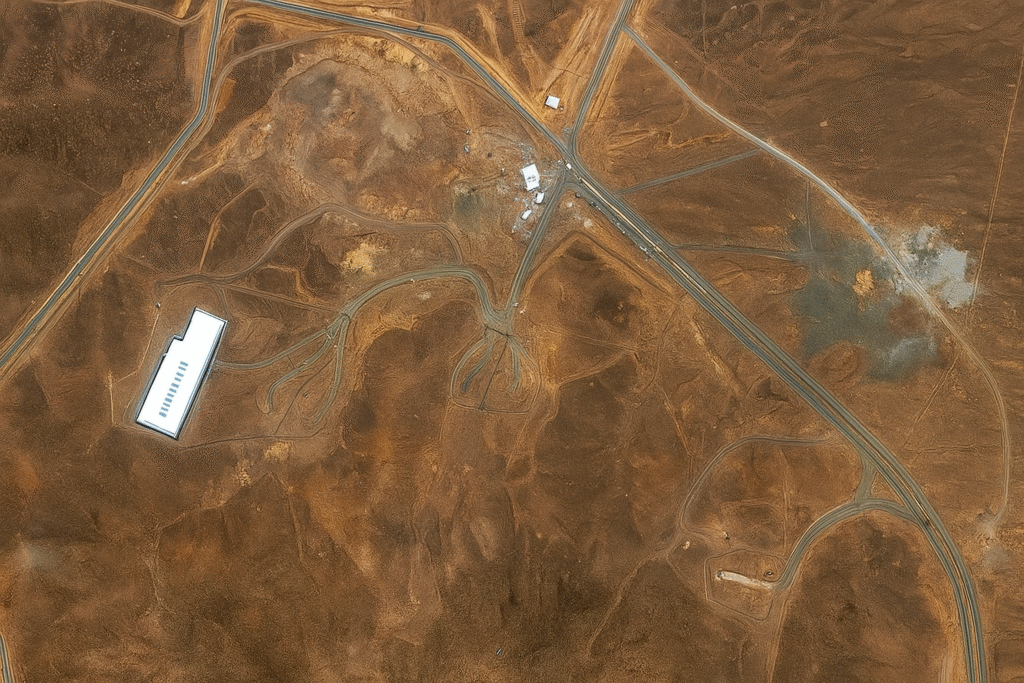“According to the International Atomic Energy Agency (IAEA), there have been no reports of heightened radiation levels beyond the immediate vicinity following the recent assaults by the United States.”
U.S. Joins Israeli Strikes on Iran’s Nuclear Sites; Trump Claims Major Facilities “Obliterated”
Former President Donald Trump announced that the U.S. military, in coordination with Israeli forces, launched strikes overnight on Iran’s major nuclear sites, including the deeply buried Fordow facility. The attacks on June 13 reportedly “completely and totally obliterated” Iran’s key enrichment centers.
The International Atomic Energy Agency (IAEA) confirmed on June 22, 2025, that there were no signs of increased off-site radiation following the strikes. Experts have assessed the risk of contamination from such attacks as limited.
Which Iranian Nuclear Sites Were Hit?
The U.S. targeted Fordow, Natanz, and Isfahan—three major enrichment locations. These strikes followed Israeli attacks on sites in Natanz, Isfahan, Arak (Khondab), and even Tehran. According to Israel, the goal is to prevent Iran from acquiring nuclear weapons. The U.S. echoed this stance. Iran maintains that its nuclear program is peaceful.
The IAEA had already reported previous damage to uranium facilities in Natanz, the Uranium Conversion Facility at Isfahan, and centrifuge sites in Karaj and Tehran. At Khondab (Arak), Israeli strikes damaged the under-construction Heavy Water Reactor and its associated plant. However, since the reactor was not operational and contained no nuclear material, the IAEA reported no radiological impact.
Heavy-water reactors can be used to produce plutonium, a potential bomb material like enriched uranium.
What Are the Risks from These Strikes?
Experts told Reuters prior to the U.S. strikes that the contamination risks were largely chemical, not radiological.
Darya Dolzikova, a senior fellow at the UK-based RUSI think tank, noted that uranium hexafluoride (UF6), a chemical used in enrichment, can produce hazardous byproducts when exposed to moisture. However, risks are reduced at underground sites due to limited dispersal.
Simon Bennett from the University of Leicester said that strikes on buried facilities posed minimal environmental risk, as the materials are encased under tons of rock and concrete.
James Acton of the Carnegie Endowment added that UF6 is toxic but not highly radioactive and doesn’t travel far. He stressed that strikes on enrichment plants are unlikely to have significant off-site consequences, though he opposes the Israeli attacks.
What About Iran’s Nuclear Reactor at Bushehr?
A major concern is the Bushehr nuclear power reactor on the Gulf coast. Panic briefly spread on June 19 after Israel mistakenly claimed it had struck Bushehr, only to retract the statement.
Experts warn that unlike enrichment sites, a successful strike on a large operational reactor like Bushehr could cause a radiological disaster.
Richard Wakeford, epidemiologist at the University of Manchester, said that serious damage to a reactor could release radioactive materials into the atmosphere or the sea.
Acton described the potential consequences of such an attack as “an absolute radiological catastrophe.”
Why Are Gulf States on Alert?
The Gulf Cooperation Council (GCC) is closely monitoring the situation due to fears of regional contamination, especially to Gulf waters — a crucial source of desalinated drinking water.
So far, there are no signs of radiological contamination. However, emergency response plans have been activated in case water or food security is threatened.
Desalinated water supplies more than 80% of drinking water in the UAE and 100% in Bahrain and Qatar. In Saudi Arabia, about half of the water supply comes from desalination.
Countries like Saudi Arabia, Oman, and the UAE have access to both the Gulf and the Arabian Sea, but Qatar, Bahrain, and Kuwait rely solely on the Gulf’s waters.
Nidal Hilal, head of NYU Abu Dhabi’s Water Research Center, emphasized the vulnerability of coastal desalination plants to environmental threats, including oil spills and potential nuclear contamination. “If a plant is disrupted,” he warned, “hundreds of thousands could lose access to freshwater almost instantly.”

